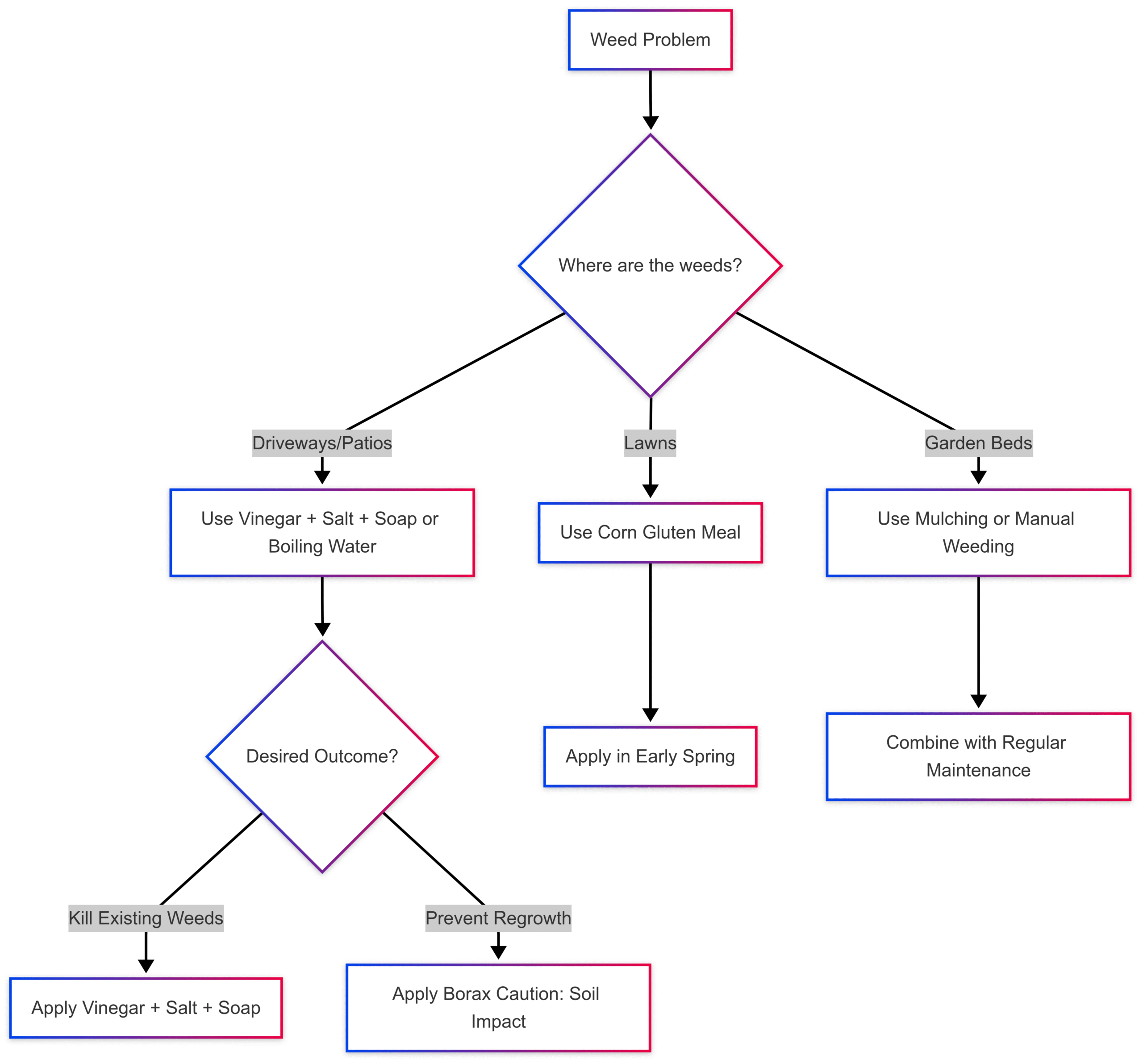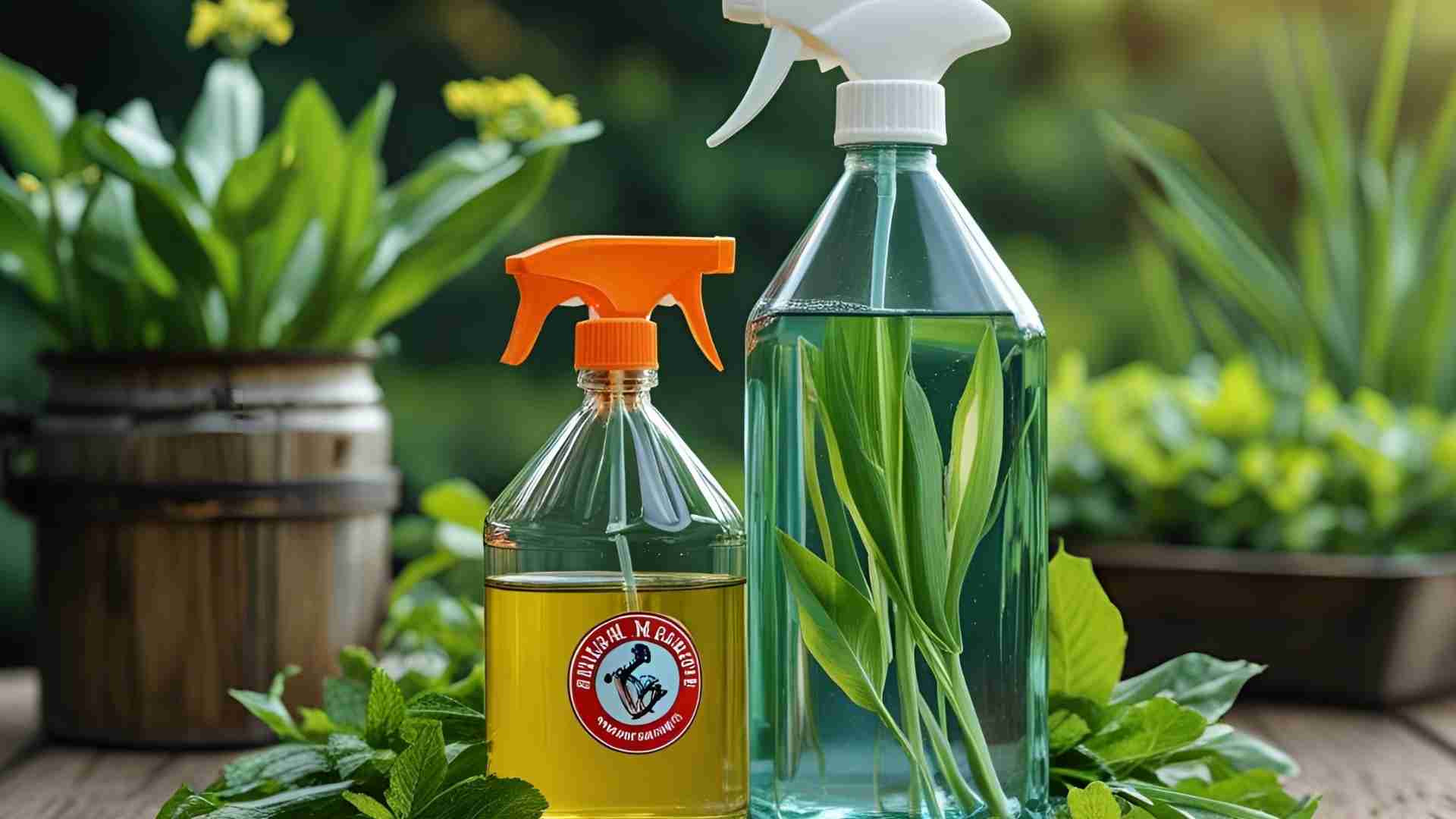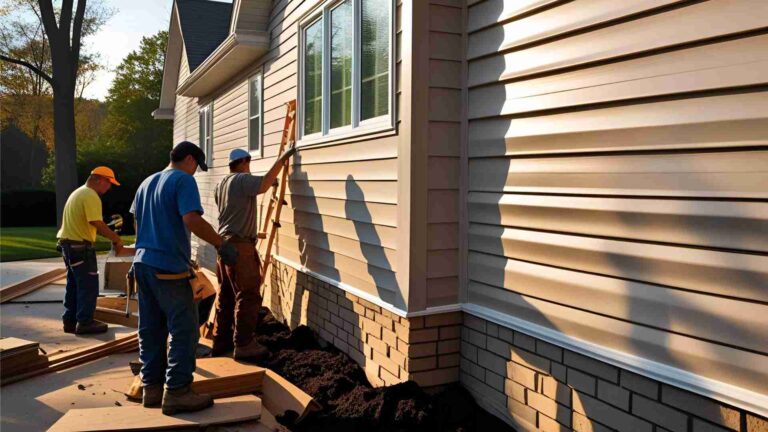Home-made weedkillers: never mix bleach and vinegar
Discover safe homemade weed killer recipes and why mixing bleach and vinegar is dangerous. Learn effective, eco-friendly weed control methods.
Weeds are the bane of any gardener’s existence, popping up in driveways, patios, and garden beds with relentless persistence. With many commercial herbicides like glyphosate-based Roundup facing bans or scrutiny due to health and environmental concerns, gardeners are increasingly turning to homemade weed killers. However, not all DIY solutions are safe or effective. One particularly dangerous combination—mixing bleach and vinegar—has led to serious health risks, including hospitalizations. This article explores safe and effective homemade weed killer recipes, the dangers of improper mixtures, and best practices for controlling weeds without harming yourself, your plants, or the environment.
Understanding the Risks of Homemade Weed Killers
The Dangers of Mixing Bleach and Vinegar
Combining bleach and vinegar, two common household products, is a hazardous practice that can produce chlorine gas, a toxic substance. Chlorine gas exposure can cause severe respiratory issues, including coughing, breathing difficulties, and irritation of the eyes, nose, and throat. In severe cases, it can lead to hospitalization or even intensive care.
Since the 2019 ban on certain herbicides in many regions, poison control centers have reported a sharp increase in incidents related to this dangerous mixture. For example, French poison control centers noted a rise from just one case between 2002 and 2013 to 203 cases after the ban, primarily during late spring and early summer when weeding is most common. Nearly half of these cases required medical treatment, with some resulting in serious health consequences.
Why People Turn to Homemade Solutions
The withdrawal of toxic herbicides from store shelves has pushed gardeners to seek alternatives. Products like Roundup, which contains glyphosate—a chemical classified as “probably carcinogenic” by the World Health Organization—have raised concerns about long-term health and environmental impacts. As a result, many turn to readily available household items like bleach, vinegar, salt, and dish soap, often inspired by online recipes or social media posts. While some of these solutions can be effective, others pose significant risks to health, soil, and desirable plants.
Safe and Effective Homemade Weed Killer Recipes
To manage weeds without resorting to dangerous mixtures, consider these safe, environmentally friendly homemade weed killer recipes. Each is designed for specific applications and minimizes harm to your garden ecosystem.
Recipe 1: Vinegar, Salt, and Dish Soap Weed Killer
This is one of the most popular and effective natural weed killers, suitable for use on driveways, patios, and other non-planted areas.
Ingredients:
- 1 gallon white vinegar (5% acetic acid, available at grocery stores for ~$3-$5/gallon)
- 1 cup table salt (~$0.50 for a 26 oz container)
- 1 tablespoon liquid dish soap (e.g., Dawn, ~$1-$2 for a small bottle)
Instructions:
- Wear gloves to protect your skin.
- In a large container, combine the vinegar, salt, and dish soap.
- Stir gently until the salt dissolves and the soap is mixed in.
- Pour the solution into a spray bottle using a funnel to avoid spills.
- On a dry, sunny day, spray the solution directly onto weed foliage and roots, focusing on the base of the plant.
- Wait 1-3 days for the weeds to wilt and brown, then remove them by hand.
Notes:
- The acetic acid in vinegar burns weed foliage, while salt dehydrates the plant and disrupts its ability to absorb water. Dish soap acts as a surfactant, helping the solution stick to leaves.
- This mixture can raise soil pH and make it harder for plants to grow, so avoid using it in garden beds or near desirable plants.
- Cost: Approximately $0.10-$0.20 per application for a small area, depending on ingredient prices.
Effectiveness:
- Works best on young, annual weeds (e.g., dandelions, crabgrass).
- May require multiple applications for mature or perennial weeds.
Recipe 2: Boiling Water with Salt
For a simple, chemical-free option, boiling water with a pinch of salt is highly effective for weeds in cracks or non-planted areas.
Ingredients:
- 1 gallon water (free from your tap)
- 1 tablespoon table salt (~$0.01)
Instructions:
- Boil the water in a large pot or kettle.
- Add the salt and stir until dissolved.
- Carefully pour the hot solution directly onto the weeds, targeting the roots.
- Allow the weeds to wilt (usually within hours) and remove them after 1-2 days.
Notes:
- Ideal for weeds in sidewalk cracks, driveways, or patios.
- Avoid using near desirable plants, as boiling water will kill anything it touches.
- Cost: Virtually free, except for minimal energy costs to boil water.
Effectiveness:
- Highly effective for small, isolated weeds.
- Less effective on deep-rooted or perennial weeds.
Recipe 3: Corn Gluten Meal
Corn gluten meal is a natural pre-emergent herbicide that prevents weed seeds from germinating, making it ideal for lawns.
Ingredients:
- Corn gluten meal (~$30-$40 for a 25 lb bag, available at garden centers)
Instructions:
- Apply corn gluten meal to your lawn in early spring before weed seeds germinate.
- Use a spreader to evenly distribute 20 pounds per 1,000 square feet.
- Water lightly to activate the meal.
- Reapply every 4-6 weeks during the growing season.
Notes:
- Safe for lawns, as it does not harm established grass or plants.
- Also acts as a nitrogen fertilizer, promoting lawn health.
- Cost: ~$1.20-$1.60 per 1,000 square feet per application.
Effectiveness:
- Prevents weed seed germination but does not kill existing weeds.
- Effective against crabgrass, dandelions, and other annual weeds.
Recipe 4: Borax Weed Killer
Borax, a naturally occurring mineral, is a potent weed killer for non-planted areas.
Ingredients:
- 10 ounces borax (~$5 for a 76 oz box of 20 Mule Team Borax)
- 4 ounces warm water
- 2 gallons cold water
Instructions:
- Dissolve borax in warm water to create a concentrated solution.
- Add the concentrate to 2 gallons of cold water in a sprayer.
- Spray directly onto weeds, focusing on the roots.
- Wait 2-3 days for weeds to die, then remove them.
Notes:
- Use cautiously, as borax can persist in soil and affect future plant growth.
- Avoid using in garden beds or near desirable plants.
- Cost: ~$0.50-$1 per gallon of solution.
Effectiveness:
- Kills mature weeds and prevents regrowth for weeks.
- Best for driveways, patios, or gravel paths.
Comparison of Homemade Weed Killers
| Weed Killer | Cost per Application | Best Use | Effectiveness | Environmental Impact |
|---|---|---|---|---|
| Vinegar + Salt + Soap | $0.10-$0.20 | Driveways, patios, cracks | High (young weeds) | Moderate (raises soil pH) |
| Boiling Water + Salt | ~$0.01 | Sidewalk cracks, patios | High (small weeds) | Low |
| Corn Gluten Meal | $1.20-$1.60/1,000 sq ft | Lawns (pre-emergent) | Moderate | Low |
| Borax | $0.50-$1/gallon | Driveways, gravel paths | High | Moderate (soil persistence) |
Using Bleach as a Weed Killer: Pros and Cons
Bleach is a popular choice for some gardeners due to its low cost and potency, but it comes with significant drawbacks.
How Bleach Works
Bleach (sodium hypochlorite) kills weeds by disrupting their ability to absorb minerals and raising soil pH to levels unsuitable for plant growth. It is most effective when applied undiluted or slightly diluted (e.g., 1 part bleach to 5 parts water) to small, isolated weeds in non-planted areas like patios or driveways.
Recipe for Bleach Weed Killer:
- Ingredients: 1 cup chlorine bleach (~$1-$2/gallon), 5 cups water, 1 tablespoon Dawn dish soap.
- Instructions: Mix ingredients in a spray bottle, shake well, and spray directly onto weeds. Wait 2-3 days for weeds to die.
- Cost: ~$0.05-$0.10 per application.
Pros
- Potent: Kills small weeds on the first application.
- Inexpensive: A gallon of bleach costs $1-$2, making it cheaper than many commercial herbicides.
- Long-lasting: Prevents weed regrowth by altering soil pH.
Cons
- Non-selective: Kills all plants, including desirable ones.
- Soil Damage: Kills beneficial soil bacteria and worms, potentially sterilizing soil.
- Staining: Can discolor paving stones or concrete.
- Toxicity: Harmful to pets, wildlife, and humans if mishandled.
- Environmental Impact: Persists in soil, affecting future planting.
Safety Precautions
- Wear gloves, long sleeves, pants, and goggles when handling bleach.
- Apply on a calm, dry day to prevent drift onto desirable plants.
- Never mix bleach with vinegar, ammonia, or other household cleaners, as this can produce toxic gases.
- If bleach contacts desirable plants, rinse immediately with water.
Why You Should Avoid Bleach for Food Plots
Using bleach for weed control in food plots, as some gardeners consider, is risky. Bleach’s persistence in soil can kill beneficial microorganisms and worms, reducing soil fertility and making it difficult to grow crops. Experts on forums like Reddit’s r/FloridaGarden and r/gardening caution that bleach can create a buildup of salts in the soil, which hinders plant growth for extended periods. For food plots, consider safer alternatives like manual weeding, mulching, or glyphosate-based herbicides (if permitted), which degrade more quickly in the environment.
Natural Weed Control Alternatives
Beyond chemical solutions, several non-chemical methods can effectively manage weeds without harming your garden or health.
Manual Weeding
- How: Use a garden trowel, screwdriver, or weeding tool to remove weeds, including their roots, after rain when soil is soft.
- Best for: Small areas or isolated weeds.
- Cost: Free (excluding tool costs, ~$5-$20 for a basic weeding tool).
- Effectiveness: High, but labor-intensive.
Mulching
- How: Apply a 2-3 inch layer of organic mulch (e.g., wood chips, straw) to block sunlight and prevent weed growth.
- Best for: Garden beds, vegetable gardens.
- Cost: $2-$5 per cubic foot of mulch.
- Effectiveness: High for preventing weed germination.
Flame Weeding
- How: Use a propane torch to burn weed foliage, killing the plant.
- Best for: Driveways, patios, or gravel paths.
- Cost: $30-$50 for a basic torch kit.
- Effectiveness: High for small weeds, less effective for deep-rooted perennials.
Chart: Weed Control Decision Tree

Best Practices for Safe Weed Control
- Use Authorized Products: Opt for products labeled “Authorized for use in gardens,” such as biocontrol products (e.g., iron phosphate for slugs) or low-risk options like those approved for organic farming.
- Identify Weeds: Use resources like Better Homes & Gardens’ weed identification guide to target invasive species while preserving beneficial plants.
- Test Soil pH: Before and after applying weed killers, test soil pH to ensure it remains suitable for planting (ideal range: 6.0-7.0 for most plants).
- Apply on Dry Days: Spray solutions on calm, sunny days to maximize effectiveness and prevent drift.
- Protect Desirable Plants: Cover nearby plants with plastic or rinse them immediately if exposed to weed killer.
Conclusion
Homemade weed killers can be a cost-effective and environmentally friendly alternative to commercial herbicides, but safety is paramount. Never mix bleach and vinegar, as the resulting chlorine gas can cause serious health issues. Instead, opt for proven recipes like vinegar with salt and soap, boiling water, corn gluten meal, or borax for specific applications. Non-chemical methods like mulching and manual weeding are also excellent options for sustainable weed control. By following these guidelines, you can keep your garden weed-free while protecting your health, plants, and the environment.
Please share this Home-made weedkillers: never mix bleach and vinegar your friends and do a comment below about your feedback.
We will meet you on next article.
Until you can read, Frigidaire Affinity Washer Stuck in Pause Mode






